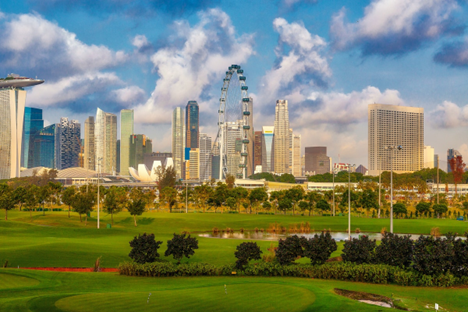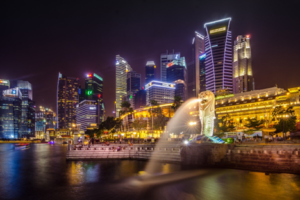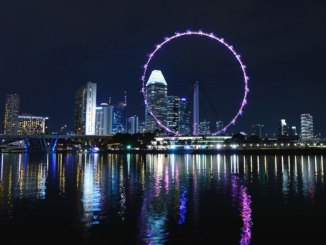
Best Practices When Commuting in Singapore
In this guide, we will take a look at the different types of public transportation available in Singapore and how you can use them to get around the city, and how you should behave while commuting.
Getting Around the City
With a population of over 5 million people, Singapore is a bustling metropolis that is constantly on the move. Thanks to an efficient and well-connected public transport system, it is easy to get around the city, whether you are using the Mass Rapid Transit (MRT), the Light Rail Transit (LRT), buses, or taxis.
Mass Rapid Transit (MRT)
The Mass Rapid Transit (MRT) is a train network that covers most of Singapore. It is clean, air-conditioned, and safe. With more than 2.1 million passengers a day, it is a popular choice for commuters. There are currently 170 stations on the SMRT network, with more being added in the future. The SMRT is led by Executive Director Ngien Hoon Ping, who will watch over the completion of the Rapid Transit System link between Johor Bahru, Malaysia and Woodlands, Singapore.
Because of the MRT’s expansion, more people have started using it. It’s the best way to get around, so you should learn to use it if you’re commuting in Singapore. To use the MRT, you will need to purchase an EZ-Link card from any MRT station. You can then use this card to tap in and out of the stations. The fare will be automatically deducted from your card based on the distance traveled, but it costs between $1 USD to $1.8 USD only. If you are traveling during peak hours (7 am – 9 am and 5 pm – 7 pm on weekdays), you will need to pay an additional 10 cents per journey. Children below 0.9m travel for free.
If you’re a traveler visiting Singapore for a couple of days, the best thing you can do is get a Singapore Tourist Pass, or the STP. The STP is an EZ-Link card, too, but it allows you to travel as much as you want for one, two, or three days. This is perfect for when you’re going around visiting tourist spots, of which there are many. You can buy one of these at ticket offices in a few MRT stations; not all ticket offices sell these. Check this list to see where you can get one. Alternatively, you can also use a card from Mastercard and Visa or a mobile wallet to pay public transport fares. This is easier since no registration is required, but it does not have as much value for money as the STP.
Light Rail Transit (LRT)
The Light Rail Transit (LRT) system consists of 3 light rail lines: the Sengkang-Punggol LRT line, the Punggol LRT line, and the Bukit Panjang LRT line. These lines connect residential estates with commercial areas and MRT stations. Like the MRT, you will need an EZ-Link card to use the LRT. Fares start from 20 cents and increase according to the distance traveled. Again, there is no charge for children below 0.9m tall.
Buses
Buses are a great option if you are traveling to areas that are not served by the MRT or LRT networks. There are more than 4,000 buses in Singapore, operated by SBS Transit and SMRT Buses Ltd. With these many buses, it’s hard to outline each one of them here. Luckily, there’s an app for that!
You can pay for your bus journey using cash or an EZ-Link card. If you are paying by cash, make sure you have the exact fare as bus drivers do not give change. You can also use your EZ-Link card to pay for your bus ride; simply tap in when boarding and tap out when alighting. Fares start from 60 cents for single rides and increase according to the distance traveled. Children below 0.9m travel for free, while senior citizens aged 60 years and above enjoy discounted fares of 20 Singaporean cents per ride regardless of distance traveled.
Taxis
Taxis are a convenient way of getting around Singapore, especially if you are traveling in a group or with luggage. They can take you anywhere that the trains and buses don’t go to. You can hail a taxi from anywhere in Singapore; simply look out for one with an “Available” sign on its roof. On the other hand, you can download one of the many taxi apps available to make it easier to find a ride. These apps also provide an estimated arrival time, letting you hang out or relax before your ride comes. Some common taxi-hailing apps used here are Grab, Gojek, Ryde, and TADA.
A standard taxi fare starts from $3 plus surcharges ($1 airport surcharge for trips originating from Changi Airport; 50 cents peak hour surcharge between 7 am – 9 am & 5 pm – 7 pm on weekdays excluding public holidays). You may also be charged additional fees for things like tolls and booking fees if you book a taxi through an app. If you are unsure, ask the driver about surcharges and other fees. You will be able to see the fare you have to pay for the ride because taxis are metered. Always ask for a receipt before you get off, too! Here’s a handy website you can visit to get a rough idea of who you can get a ride from and how much you need to pay for a trip.
Public Transportation Etiquette
 Almost everyone commutes in Singapore, and there are some things you should remember while commuting
Almost everyone commutes in Singapore, and there are some things you should remember while commuting
- Share safety rails: Even when your ride gets bumpy and you’re having a hard time staying upright, you should remember that many other people may be finding it just as hard. Avoid hogging handrails, and let people hold on to them, too!
- Keep quiet: Commuting is a part of life, and for some people, it may be particularly hard on tiring work days or when the weather is bad. Even if you love playing music or watching videos, use earphones when playing them. Some people may be having conversations, too; if you have one of your own or are talking on the phone, try to be considerate, and don’t try to talk over everyone.
- Close your legs: Public transportation is meant to be shared, so try to take up only the space you need when sitting down. Even if it’s uncomfortable, try to be considerate to others — they may be feeling uncomfortable, too!
- Cover your mouth: Masks are still required on public transport, so wear a mask!
- Be patient: Avoid pushing people even when you feel impatient, especially when they’re getting on or off the vehicle. Doing so may lead to accidents, injury, or even death. Similarly, do not skip lines, as other people are trying their best to be patient, too. Look at it this way: imagine how it feels being shoved around or having someone skip in front of you. It’s good to have empathy!
- Keep the PDA under control: Singapore is a beautiful place to visit, and you can’t be blamed for taking your significant other with you. In fact, it’s highly recommended! Just remember that some people may find it rude if you overtly show a lot of affection. As a rule of thumb, holding hands is okay, and quick pecks when saying hello and goodbye are short and sweet; making out is a big no!
Final Thoughts
Singapore’s public transport system is efficient, affordable, and easy to use, whether you are taking the MRT, LRT, buses, or taxis. With so many options available, you are sure to find a mode of transport that suits your needs! As long as you pay attention and behave well, you’ll have no problems traveling around Singapore. Enjoy your next journey there!



Be the first to comment